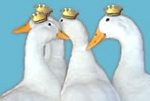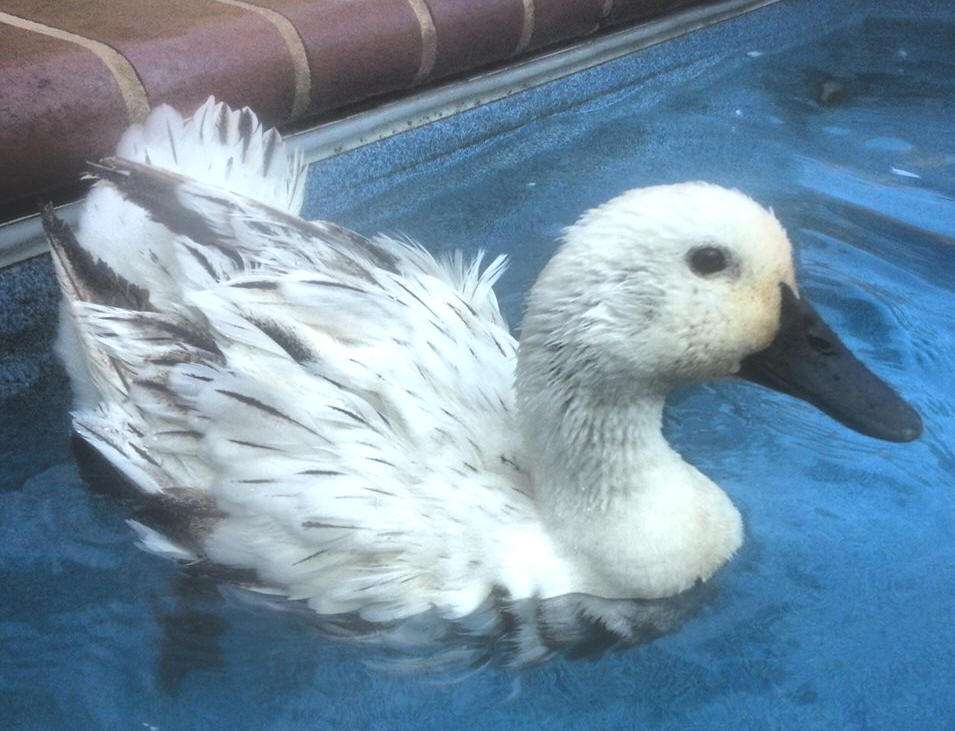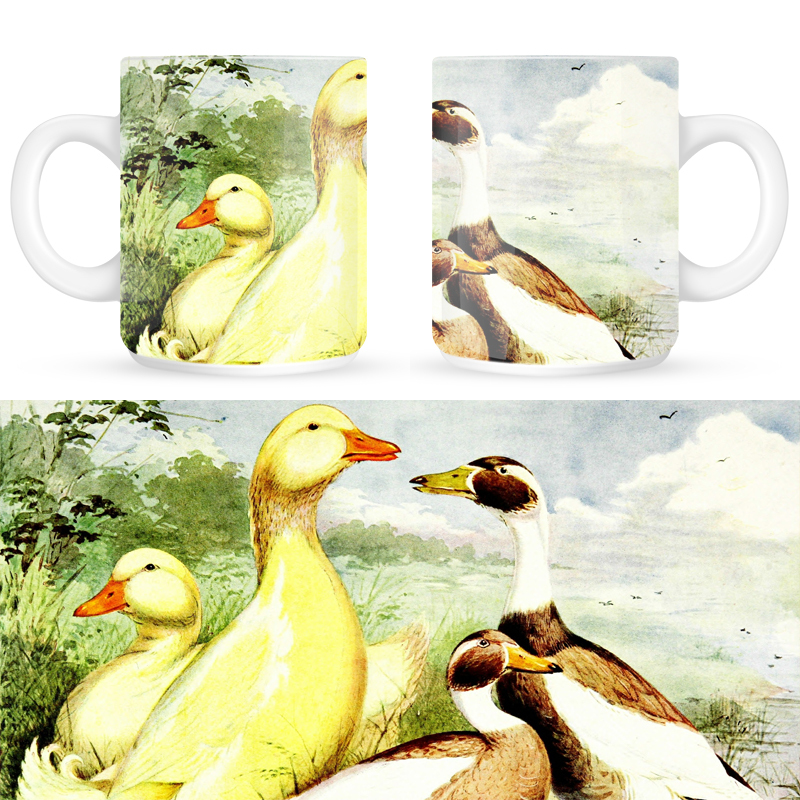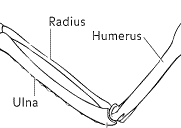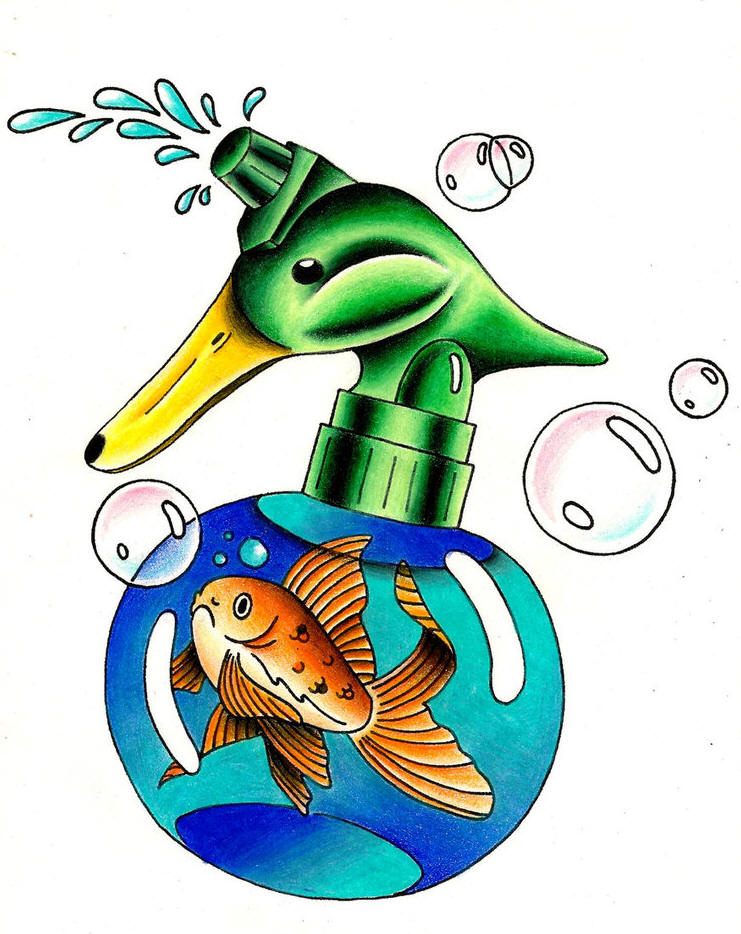Oxalic Acid and Calcium
As many duck and goose families know, calcium is vital for your ducks and geese, but especially for those laying eggs. Additional calcium is needed to form the eggshells as they pass through the oviduct. Birds laying soft-shelled eggs may not be getting enough of this mineral.
Foods with Oxalic Acid in them naturally bind with calcium, forming calcium oxalate. Your duck or goose cannot absorb the calcium in this form, rendering it useless. The higher the level of Oxalic Acid in a particular food, the more calcium it renders useless, leaving less for your feathered friend to utilize.
There are different opinions about how much oxalic acid has to be ingested before causing any egg-laying interference. While some advise that Oxalic Acid levels are too low to cause any issues, or that you'd see soft-shell evidence if there was a problem, this isn't always the case. Just because your duck or goose is laying eggs with nice firm shells, does not mean that they are not calcium deprived (only a blood panel can confirm their actual calcium levels). Your duck or goose's body may be compensating for their low calcium levels by robbing what's needed from their bones--entirely invisible to you. For this reason, we always advise erring on the side of caution when it comes to offering foods containing Oxalic Acid.
There are plenty of healthy vegetable snacks for your duck or goose to enjoy without having to put their calcium levels in jeopardy. So in the interests of their health, here is a list of raw vegetables and their associated Oxalic Acid levels:
Vegetable Oxalic acid (1 g/100 g)
High Levels
Rhubarb
1.50 - 3.00*
Parsley 1.70
Chives 1.48
Purslane 1.31
Cassava 1.26
Amaranth 1.09
Spinach 0.97
Beet leaves 0.61
Carrot 0.50
Radish 0.48
Collards 0.45
Beans, snap 0.36
Brussels sprouts 0.36
Garlic 0.36
Lettuce 0.33
Watercress 0.31
Moderate Levels
Sweet potato 0.24
Turnip 0.21
Chicory 0.21
Broccoli 0.19
Celery 0.19
Eggplant 0.19
Cauliflower 0.15
Low Levels
Asparagus 0.13
Endive 0.11
Cabbage 0.10
Tomato 0.05
Pea 0.05
Turnip greens 0.05
Potato 0.05
Onion 0.05
Okra 0.05
Pepper 0.04
Parsnip 0.04
Rutabaga 0.03
Squash 0.02
Kale 0.02
Cucumbers 0.02
Corn, sweet 0.01
Coriander 0.01
*Keep in mind these levels can vary quite a bit depending on the type of soil they were grown in, the age of the vegetable/herb when it was picked and even the season in which it was harvested (levels are often lower in the fall than they are in spring or summer).

Thank you, Susan, Katchka, Natasha and Pidgey!
Crackers' Peritonitis Surgery
In February 2013 Heather noticed a small lump on the abdomen of her female Pekin duck Crackers. Heather brought Crackers to the vet for an exam and an x-ray and was told it was just body fat. As the lump continued to grow larger, Heather decided to get it checked out once more and was again told her pet duck was just overweight. Her vet advised Heather to watch how much Crackers was eating and to make sure she was getting enough exercise.
Heather considerably increased the amount of healthy greens Crackers was eating every day and made extra sure when they were outside together that her little Pekin duck walked around and got her fair share of daily exercise. Even so, Crackers' abdomen kept growing and Heather knew there was something else going on and that she had to get Crackers to the vet again.
.jpg)
This time their vet agreed that something was going on with Crackers, but she wasn't quite sure what it was. She took x-rays that revealed a vast gray area in Crackers' abdomen. The vet suspected that this gray area was fluid, so she tapped her abdomen, but was only able to remove a small amount. A culture of the sample demonstrated that there was no bacteria present. Even so, Crackers was put on Baytril (antibiotic) twice daily and Metacam (anti-inflammatory/pain medication) once daily for two weeks.
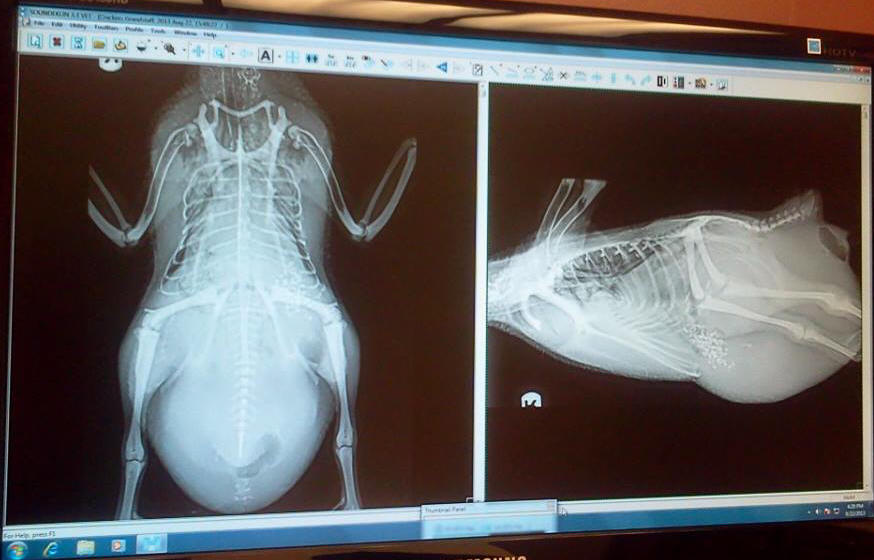
By this point, Crackers' worried Momma Duck began doing some research of her own. Her instincts were telling her that Crackers had more than fluid inside of her. She suspected eggs were in there too and began to think that Crackers might benefit from having her oviduct removed (a salpingohysterectomy). A few people who had similar surgery performed on their own ducks recommended that Heather take Crackers to see Dr. Tracey Ritzman, DVM, Dipl ABVP-Avian & Exotic Companion Mammal Specialist. Dr. Ritzman is a board-certified specialist in avian medicine and surgery and is on staff at Cascade Hospital for Animals in Grand Rapids, Michigan. She has 20 years of experience caring for ducks, geese, and other waterfowl, making her a wise choice for Crackers.
During her first appointment Dr. Ritzman palpated Crackers' coelom (abdomen) and felt four eggs inside of her as well as severe coelomic swelling. She was concerned that Cracker' egg retention might lead to the possible rupture of her swollen oviduct and also worried that she might have ectopic egg production (eggs free within the abdominal cavity). She recommended immediate surgery for Crackers especially with her chronic history of laying soft eggs and becoming egg-bound.
Surgery revealed that the gray area of Crackers' x-ray was not fluid at all, but rather severe oviductal distention, which had expanded to compensate for the 20-30 retained eggs that were packed inside. In addition, there were approximately ten more eggs present within her coelomic cavity (a result of ectopic ovulation).
All said and done, Dr. Ritzman removed three pounds of egg and egg matter from Crackers' body in addition to surgically removing her oviduct. Fortunately, Crackers had little to no infection--no bacteria brewing in all those eggs and Heather and Dr. Ritzman both believe that this relatively and unusually sterile environment is what made the operation (and Crackers' ability to recover so completely from it) such a complete success.
Crackers stayed in the hospital and was given analgesia medication (buprenorpine) for pain relief as well as anti-inflammatory (meloxicam), fluid support, nutritional support and antibiotic therapy for two nights before returning home. She had fourteen skin staples and was not allowed to swim until they were removed and she was fully healed (to prevent infection).
Post Surgical Care
Dr. Ritzman used a number of surgical clips to ligate (constrict) the enlarged blood vessels associated with Crackers' reproductive tract and minimize the risk of hemorrhage during surgery. The surgery was very intensive, so it was vital that Crackers be kept confined and quiet for the first two weeks of her recovery.
Preferring liquid to pill medication for Crackers, Heather had Baytril compounded into a liquid form at a compounding pharmacy. Crackers was given a dose of 50 mg/ml, which translated to 1.5 ml twice a day (tutti frutti flavor!) for twenty-one days.
Crackers was also given .5 ml of Metacam (1.5 mg/ml) once daily for ten days.
Crackers had her staples removed fourteen days after her surgery.
Long Term Planning
While Crackers had her functioning oviduct removed, her ovary could not be removed due to the high number of blood vessels and the real risk of hemorrhage. In birds, it is not possible to surgically remove the ovary due to the unique anatomy and blood supply to this organ.
Normally when the oviduct is removed in a bird their body will shut down egg production due to the decline in reproductive hormones, but this is not always the case. This means there was a slight chance remaining that Crackers' functioning ovary could continue to produce eggs.
In Crackers' case, Dr. Ritzman noticed during surgery that her ovary had a large number of tiny egg follicles, putting her at a higher risk for future egg production. As a safety precaution Heather arranged for Crackers to receive a hormone (deslorelin) implant, which can be implanted at the time of surgery, or in Crackers case, was inserted a few weeks later.
The hormone implant is placed either in the pectoral muscle or under the skin and contains a “negative feedback” hormone that is gradually released into Crackers' body. This hormone has a negative impact on the ovary and the reproductive system and helps to suppress reproductive activity and egg production. Although the deslorelin implant is not currently approved by the Food and Drug Administration (FDA) in the United States for use in birds, many avian veterinarians are using the implant off label for treatment in their avian patients with good success.
For more information on Deslorelin implants and Peritonitis, visit our March 2013 Newsletter.
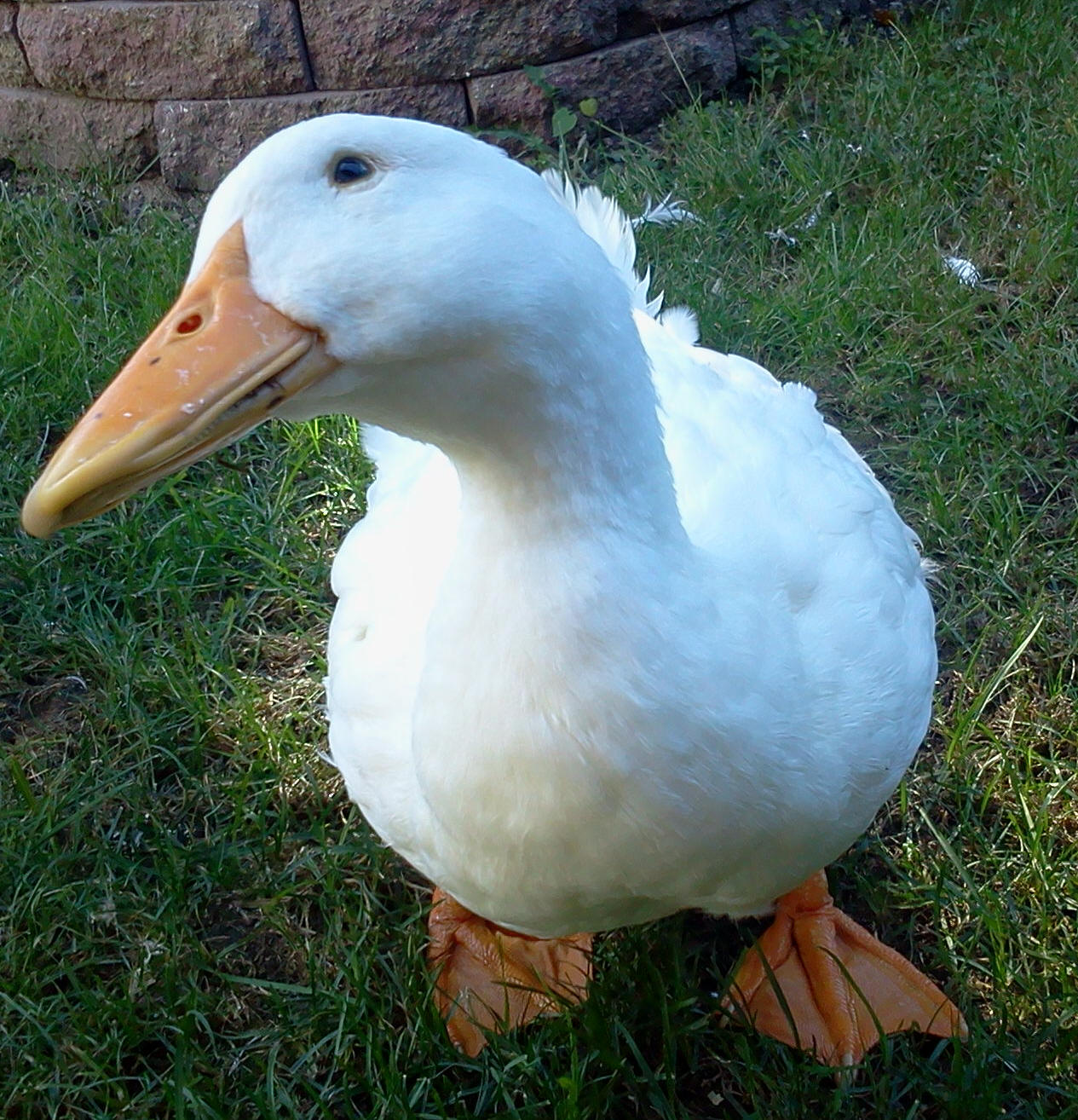
Special thanks to Heather, Crackers & Dr. Ritzman for sharing their knowledge, information and photos so openly to help other ducky families, and thanks to ALL of the caring people who donated towards Crackers' surgery!
Ducks Too!
The Ducks Too Facebook page was created in May 2012 as an offshoot of the popular chicken keeping Facebook page Fresh Eggs Daily, which is devoted to raising backyard chickens. Lisa at Fresh Eggs Daily felt there was enough interest in backyard ducks to warrant a separate page for them. And boy, was she right! In a year and a half Ducks Too has attracted more than 7,000 fans who are either already raising ducks as pets, companions and egg layers, or considering it. Ducks Too uses their page to educate people about what domestic ducks require in the way of feed, housing and shelter, and also try to promote and encourage more people to consider a flock of backyard ducks.
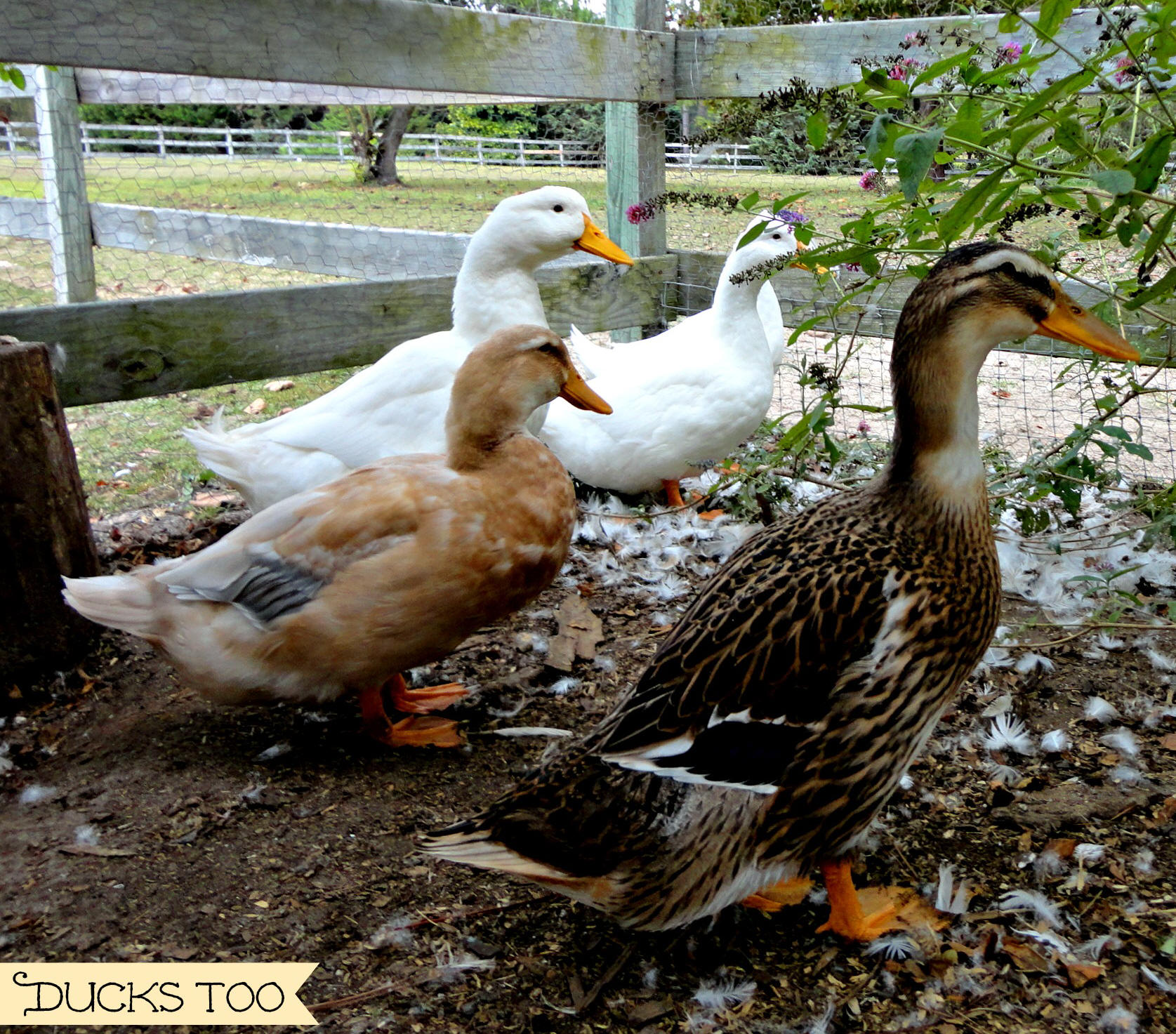
Lisa hopes that through education, she will help others provide their ducks with a happy, healthy place in their family in a safe environment for the duration of their lifespan.
Ducks Too offers plenty of helpful advice while sprinkling lots of cute ducky photos into the mix! Here Lisa answers questions from fans and stresses the importance of having predator-proof duck houses and pens while also pointing out the risks of free ranging non-flying, domestic ducks. If you have ducks, are thinking of getting ducks, or just love ducks in general, please take a look!
Visit
their
Fresh Eggs Daily
Blog
to enter to win a FREE copy of:
The Ultimate Pet Duck Guidebook:
All the things you need to
know before and after bringing
home your feathered friend
--written by Majestic's Founder,
Kimberly Link.


